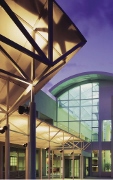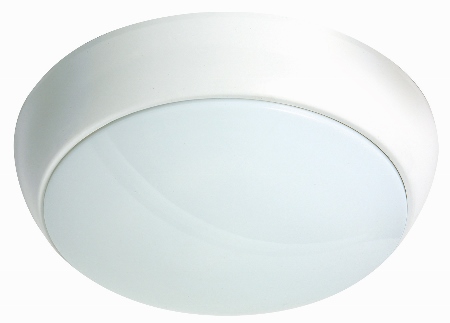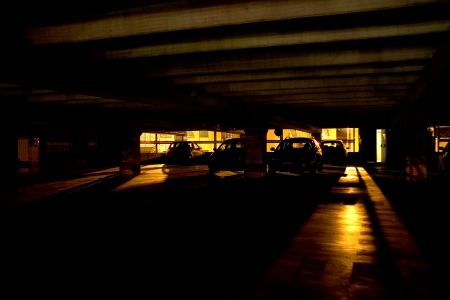Lighting is vitally important within hospital settings, having been found to help with patient recovery and staff wellbeing, as well as aiding clinicians with diagnoses. But, while most organisations have enhanced lighting within their buildings, what about outside spaces?
The walk from the car park to the hospital entrance often takes patients, staff and visitors along a path or walkway across a piece of open ground such as a small park or garden. Therefore, good-quality lighting is vital to make these people feel safe and comfortable, particularly when navigating outside spaces at night.
Architectural outdoor lighting can effectively turn your building into a prominent landmark, a living symbol of care and hospitality
Lighting manufacturer, Philips, has produced a 72-page guide entitled Designing People-Centric Hospitals Using Philips Lighting Solutions. It states: “The outdoor area around a hospital helps to form the first impression that patients and visitors get on arrival. “In the evening and at night, outdoor lighting is essential for safety and security reasons, which means that lighting is usually left on during the night.
“In view of sustainability and energy saving, it therefore makes sense to have lighting only where and when it’s needed.”
Cutting emissions
Key areas for exterior lighting include car parks, public walkways, gardens and seating areas, roads, entrances and, increasingly, helipads; and there are a number of solutions available, from bollard and bulkheads to post-tops and projection lamps.
The Philips guide states: “In parking areas during hours of reduced daylight or at night, good lighting is key. Sufficient light is needed for both drivers and pedestrians and light levels should be functionally high enough to allow easy tracking of the parked vehicle and bright enough to allow pedestrians to feel safe in their nearby surroundings.”
This has led to increased use of motion-sensing lighting technologies, which come on only when they sense a person or a vehicle. Such solutions are particularly popular as lighting uses a significant amount of energy at a time when the NHS is charged with cutting its carbon emissions.
When it comes to hospitals and health centres, the use of good external lighting to ensure safety and security is a main consideration
When you consider that lighting accounts for an average of 44% of a hospital’s entire electricity usage - almost twice the amount used in commercial buildings - it becomes clear that investment in energy-efficient lighting can have an enormous impact on the running costs of healthcare facilities.
With this in mind manufacturers have created dedicated outdoor LED lighting ranges, including GE Healthcare’s Odyssey product, a new controllable fitting that utilises LED luminaires.
LED solutions such as this also help to reduce maintenance costs as they need changing far less often than traditional units.
Design freedom
Philips also has a number of products, including its Pacific LED Green Parking, which enables its LED lighting to be put into ‘zones’ and activated only where there is activity – achieving 80% energy savings when compared to traditional covered parking lights.
Moving away from the car parking areas, it is essential to have good lighting to give a warm and welcoming feeling to the buildings themselves, particularly for those who may be anxious or confused.
Building facades offer more design freedom in terms of colour, dynamics and energy efficiency, with the possibility of using branding within the lighting solution.

White floodlighting projected to the outside of a building generates a safe and friendly environment
“Architectural outdoor lighting can effectively turn your building into a prominent landmark, a living symbol of care and hospitality,” says the Philips guide.
“Artificial light takes over the modelling of the sun and accentuates the architecture. White floodlighting on the ceiling projected from the inside of the building creates an open and inviting ambience, for example.”
The Department of Health’s Health Technical Memorandum 00 states that all lighting specifications should comply with the Chartered Institution of Building Services Engineers (CIBSE) Guide Lighting Guide 02: Hospitals and Health Care Buildings and its SLL Code for Lighting documents.
It says that, to achieve optimum energy efficiency, lighting design should maximise use of natural daylight; avoid unnecessarily-high levels of illumination; incorporate efficient luminaires, control gear and lamps; and effective controls.

Manufacturers such as YESSS Electrical are offering outdoor LED solutions that help to reduce carbon emissions
Easy to maintain
When dealing with external lighting sources it warns about the use of excessive lighting and calls for sensor-activated luminaires to be specified where possible. It also advises against the use of external lighting columns, which could be used as a climbing aid or pose a security risk.
Lighting specialist, MK Gulf, has also produced guidance for specifiers. “Good exterior lighting can be a guarantor of maximum safety in a hospital entrance or of reassurance in a lonely car park,” is states.
“But exterior lighting projects needs careful thought to include light nuisance control especially considering most healthcare buildings are sited within areas of higher populations.”
Neil Wareham, head of Southern Lighting Design Services and Solutions at YESSS Electrical, added: “When it comes to hospitals and health centres, the use of good external lighting to ensure safety and security is a main consideration. We all feel safe and secure when an outdoor area is well lit, and this is even more important in an area such as outside hospitals where people may feel slightly more vulnerable.”
As well as being CIBSE compliant, he said external lighting products should be high quality and able to withstand outdoor elements.
In view of sustainability and energy saving, it makes sense to have lighting only where and when it’s needed
He added: “Of course, quality does come with a price, so it’s important that products are energy saving and low maintenance in order to keep associated costs to a minimum.
“A huge range of LED wall lights are now available. This is a low-maintenance option as it lasts for longer, which is of course beneficial when it comes to external lighting.
“Larger areas can be covered by more-powerful fittings. Some car park and amenity LED fittings can produce well above 20,000 lumens yet remain incredibly energy efficient. Many options come with a lifetime of 100,000 hours, almost five times longer than traditional discharge lamps.
“For the healthcare sector, the long lifespan of these fittings is beneficial as it saves on constant upkeep and maintenance.”

Car parks, in particular, must be well lit
